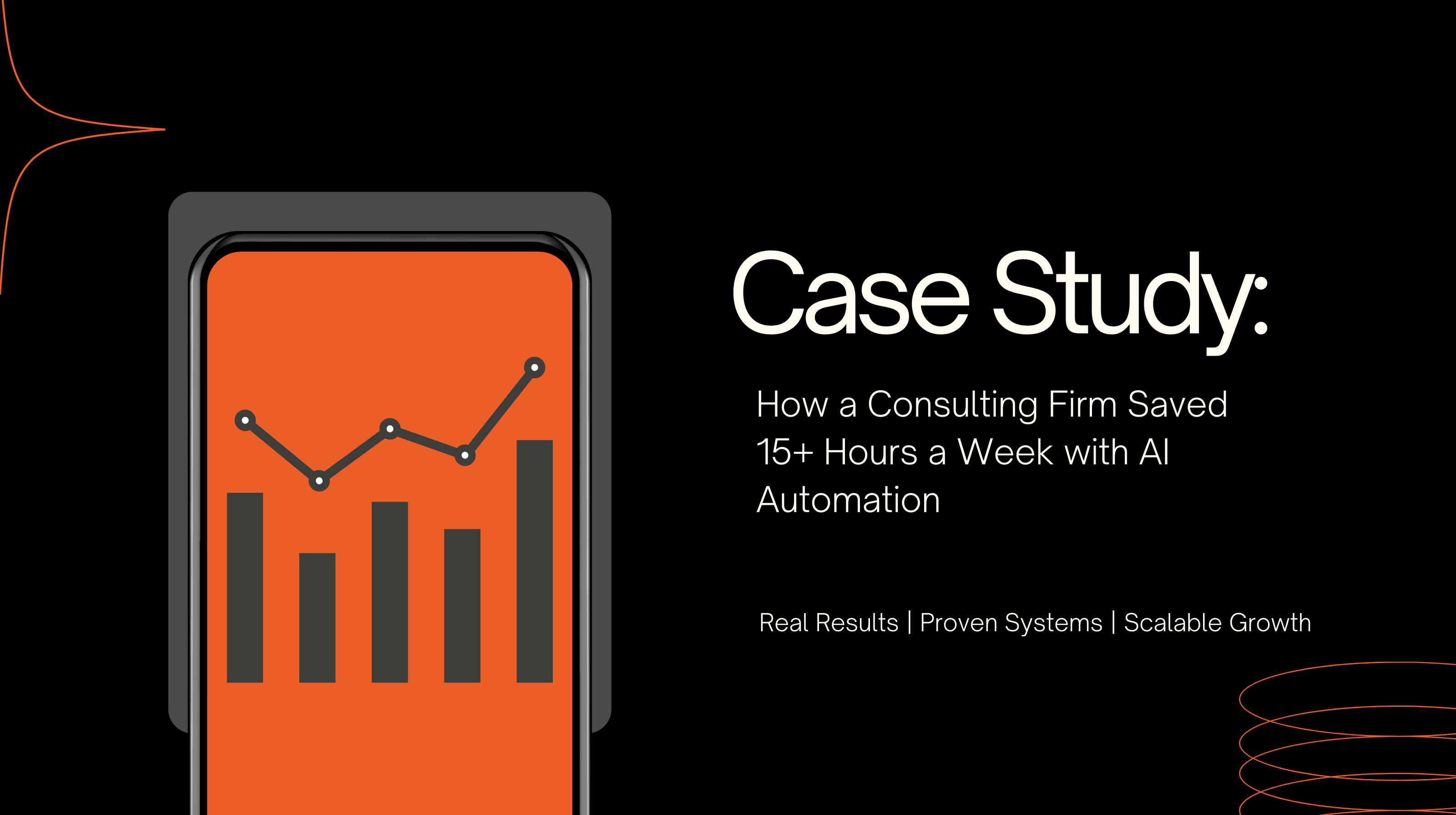APIs are the backbone of modern digital systems. Scalable APIs ensure smooth performance as traffic and data demands grow. They handle increasing workloads without slowing down or crashing, making them critical for businesses aiming to grow and stay competitive.
Key Highlights:
Quick Tips for Scalable APIs:
Scalable APIs aren't just technical tools - they’re key to business growth. Investing in these systems ensures reliability, boosts revenue, and prepares businesses for future challenges.
How to Optimize API Performance for High-Traffic Applications | Keyhole Software
Building Scalable API Architecture
The success of any scalable API starts with its architecture. A poorly designed API can lead to technical debt, slow down development, limit scalability, and even jeopardize the system's long-term viability. Understanding these risks is crucial when building systems meant to grow.
Comparing API Architecture Types
Different architectures - REST, GraphQL, and gRPC - offer unique approaches to scalability.
REST APIs are widely popular, mainly because their stateless design makes horizontal scaling straightforward. Each request contains all the necessary information, so you can easily add servers to manage increasing traffic without the hassle of session management.
GraphQL allows clients to request precisely the data they need, minimizing over-fetching and under-fetching. This approach improves network efficiency and scalability. For instance, Uber saw a massive improvement in 2019 after adopting GraphQL, reducing their contract delivery error rate from 46% to just 0.45%.
gRPC blends the simplicity of REST with real-time capabilities, making it ideal for high-performance environments like microservices. Built on HTTP/2 and Protocol Buffers, gRPC delivers exceptional speed. LinkedIn Engineering reported a 60% performance boost using Protocol Buffers. Similarly, Uber transitioned its RAMEN tool to gRPC in 2019, enabling the system to handle over 1.5 million simultaneous streaming connections and deliver 250,000 messages per second.
WebSockets, while powerful for persistent connections, pose unique challenges. They typically favor vertical scaling, which requires careful planning to ensure scalability.
Choosing the right architecture is just the first step. Next comes applying key design principles to build systems that scale effectively.
Design Principles for Scalability
Scalable APIs demand thoughtful design from the ground up. It's not just about adding more servers - it’s about optimizing every layer of the system, including architecture, caching, and load balancing.
A stateless design is fundamental. By treating each request as independent, traffic can be seamlessly distributed across multiple servers. Amazon Web Services, for example, ensures high availability and scalability by adhering to this principle.
Microservices architectures allow individual components to scale independently. This modularity ensures that scaling one part of the system doesn’t impact others, making it easier to adapt to changing demands.
Asynchronous operations improve responsiveness by queuing long-running tasks while delivering immediate responses, keeping the system efficient even when under heavy load.
A resource-oriented design enhances usability and scalability. Take the Google Maps API as an example - its structure around distinct resources like maps, routes, and places makes it both intuitive for developers and scalable.
Caching strategies can dramatically boost performance. Optimized caching can improve response times by up to 70% while cutting backend costs.
"At the end of the day, scaling APIs isn't just about adding more servers; it's about designing systems that can grow while staying reliable and efficient."
By focusing on these principles, you lay the groundwork for a system that can handle growth efficiently.
Infrastructure Patterns for High Availability
Ensuring high availability means designing systems that can withstand failures and handle traffic spikes without missing a beat. This requires redundancy and automation from the start.
Auto-scaling groups dynamically adjust server capacity based on real-time demand. This ensures resources are available during traffic surges while avoiding unnecessary costs during quieter times. Predictive scaling, for example, can reduce AWS expenses by 30% while maintaining uptime.
A warm pool of pre-initialized servers can handle sudden traffic spikes effectively. Raygun, which processes thousands of requests per second with occasional spikes into the hundreds of thousands, uses this strategy to maintain performance.
Load balancers are essential for distributing incoming requests across multiple servers, preventing any single server from becoming overwhelmed. They also enhance reliability by rerouting traffic away from failing servers and caching responses when needed.
An event-driven architecture decouples request processing from response delivery, allowing systems to better absorb fluctuating loads.
Scaling databases is another critical piece of the puzzle. Techniques like read replicas, sharding, and caching ensure that the database doesn’t become a bottleneck. For example, Redis caching can reduce database load by 80%, keeping response times under 100 ms even during peak usage.
Comprehensive monitoring helps identify and resolve issues before they impact users. Setting up alerts and tracking key metrics ensures the system remains reliable.
Lastly, understanding horizontal vs. vertical scaling is important. Horizontal scaling, which involves adding more servers, offers greater capacity and reliability. Vertical scaling, on the other hand, can lead to single points of failure due to hardware limitations. Modern cloud-native applications prioritize horizontal scaling, often leveraging containers and orchestration tools to manage distributed systems efficiently.
API Performance Optimization
Optimizing API performance isn’t just a technical task - it’s a business necessity. Consider this: Amazon loses 1% of sales for every extra 100 milliseconds of latency. With APIs powering 83% of all web traffic and 43% of companies reporting losses exceeding $1 million per month due to API slowdowns and outages, the stakes are incredibly high. A slow API doesn’t just frustrate users - it drains revenue.
And speaking of users, 70% abandon apps that take too long to load. These numbers paint a clear picture: performance optimization isn’t optional; it’s critical. Let’s dive into some strategies that can make a real difference.
Improving Data Queries and Access
When it comes to API performance, database queries are often the biggest bottleneck. Optimizing how data is accessed can transform sluggish APIs into fast, scalable systems without requiring a complete overhaul.
Indexing is a great place to start. A well-designed index can turn a slow query into a lightning-fast one. Focus on indexing columns used in WHERE clauses, JOIN conditions, and ORDER BY statements. But don’t go overboard - too many indexes can slow down write operations.
Connection pooling is another game-changer. Instead of creating a new database connection for every request, connection pools reuse existing connections, cutting down on setup time and reducing latency.
For complex queries, efficient table joins are essential. Use INNER JOINs for better performance and consider denormalizing data for read-heavy workloads to avoid complex joins altogether.
Data serialization also plays a role. While JSON is widely used, formats like Protocol Buffers and MessagePack are faster and more efficient, reducing both processing time and bandwidth usage.
Monitoring your database is key. Red flags like CPU usage above 80%, memory dropping below 20%, or consistently high network I/O signal it’s time to scale up - whether that means adding more processing power, increasing RAM, or upgrading your network.
"You cannot improve something that you cannot measure" - Anna Irwin, Developer Evangelist, Aptori
Caching Strategies for Better Performance
Caching is one of the most effective ways to improve API performance. Just look at RevenueCat, which handles over 1.2 billion API requests daily - a feat made possible by smart caching strategies.
Client-side caching reduces server load by letting users’ devices store responses. Use HTTP headers like cache-control, expires, e-tags, and last-modified to guide clients on how long cached data can be used before fetching updates.
On the server side, in-memory caching tools like Redis provide blazing-fast access to frequently used data. This is especially useful for dynamic content that’s expensive to generate but can be reused across multiple requests.
RevenueCat’s approach offers some valuable lessons. They built a custom cache client to avoid the overhead of repeated TCP handshakes. Additionally, they use dedicated pools for high-cost cache data, mirrored pools for read-heavy workloads, and key splitting to evenly distribute load across hot keys.
Different caching methods suit different needs:
When storage fills up, cache eviction policies kick in. Least Recently Used (LRU) prioritizes frequently accessed data, First In, First Out (FIFO) keeps things simple but might remove important data, and Time-To-Live (TTL) ensures data doesn’t go stale but requires careful configuration.
Real-Time Data Processing
For APIs that need to adapt instantly to changing conditions, real-time data processing is a game-changer. By treating every incoming data point as a state change, you can deliver instant responses and stay ahead of the curve.
Apache Kafka is a standout tool for handling high-volume data streams, offering end-to-end latency under 100 milliseconds, even at scale. Its distributed architecture ensures low latency and high availability, making it perfect for mission-critical systems.
Change Data Capture (CDC) is another powerful approach. It syncs APIs with source databases in real-time, updating your API layer as changes occur without the need for constant polling.
For real-time analytics, windowed aggregations are incredibly useful. These process streaming data within specific time intervals, making it possible to calculate metrics or generate reports on the fly, for example, processes over 5 million events per second using this method.
"Dynamic window computation models aren't just an interesting concept for technical experts; they're the backbone of real-time analytics that empowers actionable insights in time-sensitive environments." - Tyler Garrett, Author, Dev3lop
To make real-time processing even faster, keep data in memory instead of writing it to disk at every stage. Use watermarking to manage late-arriving data in windowed aggregations, and ensure your timestamp precision aligns with your analytics goals.
Compression can also help reduce data transfer sizes. Tools like Brotli offer better compression ratios than GZIP, though you’ll want to confirm client compatibility before implementation.
Performance optimization isn’t a one-and-done task. Regular monitoring and adjustments ensure your APIs stay responsive as traffic grows and user needs evolve.
Managing Traffic and Ensuring Reliability
APIs, even when optimized, can falter under sudden traffic surges or malicious attacks. For instance, India saw a staggering 3,000% rise in API-targeted DDoS attacks over just three months in 2025. To keep APIs running smoothly, especially during such challenges, robust traffic management and reliability measures are a must.
This section dives into strategies to maintain API dependability during high traffic and potential threats.
Rate Limiting and Access Control
Rate limiting is a frontline defense against system overload and misuse. For example, GitHub’s API caps user access tokens at 5,000 requests per hour, while Twitter restricts certain endpoints to 900 requests every 15 minutes. These limits are carefully aligned with server capacity and fair usage principles.
"API rate limiting is a critical mechanism that governs the number of requests a client can make to an API within a specific time frame." - Alex Lawrence
The choice of algorithm plays a pivotal role here. The Token Bucket Algorithm is particularly effective, allowing brief bursts of requests while maintaining a steady average throughput. For even greater flexibility, dynamic rate limiting adjusts thresholds in real time based on server load and traffic patterns. This approach ensures your API adapts - tightening restrictions during heavy loads and easing them during quieter times.
Device fingerprinting offers another layer of control, letting you apply limits to specific devices rather than just IP addresses.
When implementing rate limiting, ensure your API provides clear feedback. For instance, use a 429 status code for "Too Many Requests" and include a Retry-After header to inform clients when they can attempt requests again.
Error Handling and System Recovery
When traffic limits are exceeded, effective error management becomes crucial. Mistakes will happen, but how your API responds can determine whether users stick around or leave. Thoughtful error handling is a cornerstone of reliable, user-friendly APIs.
Circuit breakers and exponential backoff are two key techniques. Circuit breakers prevent cascading failures by halting requests to failing services, giving them time to recover. Meanwhile, exponential backoff spaces out retry attempts, reducing strain on the system.
Comprehensive logging is another must-have. It captures vital debugging information without overwhelming storage. For example, organizations using efficient caching strategies often lower authorization overhead by 70–80%. Similarly, selective logging can cut storage and processing needs by 60–80% while enhancing security visibility.
Error messages should be clear and actionable. Standardized error codes help both developers and automated systems address issues consistently. And don’t forget to test your error handling rigorously - simulate network timeouts, database failures, and other scenarios to ensure your API degrades gracefully under stress.
API Security and Abuse Prevention
As APIs scale, they require more sophisticated security measures to handle growing traffic and threats. Protecting your API involves balancing accessibility for legitimate users with real-time defenses against malicious actors.
"The challenge is balancing flexibility for legitimate users while blocking malicious actors on-the-fly, especially in environments where traffic volumes soar unpredictably." - Red Hat
Adaptive rate limiting goes beyond simple request counting by analyzing patterns like request timing, endpoint usage, and historical behavior. This helps distinguish between legitimate high usage and potential abuse.
Stateless JWT tokens with minimal payloads are a smart choice for reducing overhead while maintaining security. Additionally, treating security as microservices - separating authentication, authorization, and threat detection - lets these components scale independently.
Session resumption methods, such as using tickets or IDs, can bypass full TLS handshakes for repeat clients, cutting down latency and server load.
Validation should occur in stages, with quick failures for obviously invalid requests. API microsegmentation limits movement within your system if an attacker breaks in, while just-in-time access grants permissions only when necessary.
Continuous monitoring is essential. Establish traffic baselines, log suspicious requests, and capture authentication events. To avoid overwhelming your systems, sample routine traffic and focus on anomalies.
Finally, regular security audits and penetration tests are non-negotiable. Combine these with load testing to ensure your defenses hold up under real-world pressure.
Long-Term Scalability and Operations
Building a scalable API is just the beginning. To ensure long-term success, you need to focus on monitoring, managing costs, and keeping up with evolving trends.
Monitoring and Alert Systems
Monitoring isn't just about uptime - it's about keeping your API running smoothly and proactively addressing issues.
"Effective API monitoring is more than just checking for uptime - it's about ensuring robust performance, timely alerts, and insightful analytics." - Last9
Start by defining a baseline, like a response time under 200 ms, and set up alerts for any deviations. This approach helps you catch problems early, before users even notice. Key metrics like response time, error rates, latency, and throughput are essential for tracking API health. But don't stop there - integrate security checks into your monitoring to catch vulnerabilities before they escalate.
Group related alerts to make them actionable. For instance, instead of separate alerts for CPU spikes, slow response times, and increased errors, create a single alert that ties these symptoms together. Regularly reviewing monitoring reports with your team can uncover trends and potential issues before they become critical. Weekly check-ins with development, operations, and QA teams ensure everyone is on the same page.
Testing under different traffic patterns is also essential. Simulating real-world scenarios helps confirm that your scalability measures hold up under pressure. These practices not only improve performance but also provide insights for smarter cost management.
Cost Management for Scalable APIs
As your API grows, costs can quickly spiral if left unchecked. Smart strategies can help you get the most out of your infrastructure.
Selecting the right API architecture can make a big difference. For example, switching from REST APIs to HTTP APIs can cut costs by up to 71%. REST APIs cost about $3.50 per million calls, while HTTP APIs are closer to $1.00 per million calls. WebSocket APIs fall somewhere in between, with additional connection charges.
Another cost-saving measure is effective caching, which improves performance while reducing backend expenses. One financial services company saved 40% on data transfer costs by moving internal APIs to private gateways, while also enhancing security and speed.
Right-sizing resources is another often-overlooked strategy. Many cloud setups are over-provisioned by 30–45%, which means you're paying for capacity you don't actually use. Regular audits can help identify and eliminate these inefficiencies.
For predictable traffic patterns, reserved capacity can save you up to 70% compared to on-demand pricing. If your API experiences steady baseline traffic with occasional spikes, reserve resources for the baseline and use auto-scaling for peak times.
Other cost controls include compressing payloads to reduce bandwidth usage and implementing throttling and usage plans to prevent unexpected traffic surges.
Regularly review your cost reports, update alerts, and adjust budgets as your usage patterns evolve. What works today might not be the best solution six months down the line.
New Trends in API Scalability
API scalability isn't just about managing daily operations - it's about staying ahead of the curve. Emerging trends like AI, edge computing, and evolving security needs are reshaping the API landscape.
AI-driven automation is transforming API management. According to Kong's 2024 API Impact Report, the value of APIs in enabling AI is expected to grow by 170% by 2030. In fact, AI-related API traffic on Postman jumped 73% in the past year alone.
"There is no AI without APIs. And as developers look to leverage AI and LLMs for future innovation, the more APIs there will be to manage." - Marco Palladino, CTO and Co-Founder of Kong
GraphQL adoption is also on the rise. A 2024 Hygraph survey found that 61% of respondents already use GraphQL in production, with another 10% planning to transition from REST to GraphQL. This shift allows clients to request only the data they need, improving efficiency.
Event-driven APIs are becoming critical for real-time applications. The AsyncAPI Initiative reported a jump in specification downloads from 5 million in 2022 to 17 million in 2023. This reflects the growing demand for asynchronous, real-time data processing.
Security challenges are escalating as APIs become more sophisticated. Over 55% of organizations reported API-related security incidents in 2024, with 20% suffering damages exceeding $500,000. Kong predicts that API attacks will increase tenfold by 2030.
"The more sophisticated technologies - like AI - get, the more sophisticated attackers get." - Marco Palladino, CTO and Co-Founder of Kong
Edge computing is driving a shift toward decentralized architectures. Serverless APIs are increasingly used in edge scenarios where low latency is critical.
Finally, API monetization is gaining momentum. Businesses are treating APIs as standalone products with usage-based pricing models and dedicated monetization platforms.
To stay competitive, consider automating governance across multiple gateway products, even for internal APIs. Use centralized platforms to maintain visibility over all endpoints. Build resilience into your design with features like rate limiting, retries, and circuit breakers.
These trends highlight the importance of designing APIs that can evolve without needing a complete overhaul. As one expert put it, "assume that growth will happen", and plan accordingly.
Using Devcore for Scalable APIs

As APIs increasingly face challenges like surging traffic and system inefficiencies, finding specialized solutions becomes a necessity. Devcore steps in with custom automation and AI-driven tools designed to address the scalability issues that growing businesses encounter. By integrating these tools into your API ecosystem, Devcore ensures that your systems are prepared to handle growth effectively.
Custom Automation and AI-Powered Tools
Scaling APIs successfully means building systems that can handle fluctuating demands without breaking down. Devcore's AI-powered tools are designed to address these challenges head-on.
Take automated decision-making, for example. When your API is processing thousands of requests per second, relying on manual workflows becomes a bottleneck. A real-world case: in 2025, a SaaS company implemented Devcore's AI-driven lead scoring and deal matching system within their CRM. The result? A 40% boost in high-quality lead conversions and over 70 hours saved per month on manual reviews. In the context of API operations, this kind of automation not only speeds up response times but also eliminates delays caused by human intervention.
Another game-changer is AI-driven workflow optimization. Instead of sticking to static rules, Devcore's AI tools dynamically adapt to traffic patterns and allocate resources in real time, ensuring your API remains responsive even during peak usage.
The benefits extend beyond improved performance. For instance, an investment advisory firm using Devcore's AI-powered call transcription and CRM integration reduced admin time by 85% and saved $30,000 annually on virtual assistant costs. When applied to APIs, such automation can significantly cut down the time and cost associated with managing scalable systems.
"We map every operational choke point. We architect precision-built, fully custom systems to clear them." - Devcore
What sets Devcore apart is its focus on custom solutions rather than generic plugins. This tailored approach ensures that every component is optimized to meet your specific needs.
The Leverage Blueprint™ for Scalability
When it comes to API scalability, the real challenge often lies in anticipating where your system might fail before it actually does. Devcore's proprietary Leverage Blueprint™ is designed to tackle this issue by offering a structured approach to identifying and addressing operational bottlenecks.
The Blueprint dives deep into your API infrastructure to identify potential choke points. Instead of merely monitoring performance metrics, it uncovers the underlying processes, dependencies, and decision points that might lead to issues as traffic grows. This proactive approach allows you to design solutions before problems arise.
Unlike one-size-fits-all scalability patterns, the Blueprint emphasizes precision. It provides actionable insights tailored to your specific challenges, ensuring that every system build aligns with measurable business goals. The framework focuses on creating infrastructure that not only solves current issues but also supports future growth.
"Every build aligns with a business outcome. Every automation increases operational leverage. Every integration compounds future efficiency. This isn't software for software's sake - it's infrastructure for scale." - Devcore
Devcore's results speak for themselves, with claims of saving clients over 22,000 hours and generating more than $10 million in additional revenue through AI-driven automation.
Technical Development and API Integration
Building scalable APIs requires not just strategy but also technical expertise. With the insights provided by the Leverage Blueprint™, Devcore translates these findings into practical, scalable solutions through advanced development practices and seamless integration.
Custom API integrations are key to ensuring smooth data flow as your system grows. Instead of forcing your API to adapt to incompatible tools, Devcore's integrations ensure that everything works together seamlessly, even as your ecosystem expands.
To effectively manage scalability, custom dashboards play a crucial role. Unlike generic monitoring tools, these dashboards are tailored to track critical metrics like response times, error rates during traffic spikes, and resource usage patterns. This level of detail provides the insights needed to keep your API running efficiently.
Devcore follows a structured approach to development, starting with a discovery call to understand your specific challenges and goals. From there, they design solutions, build and integrate custom AI systems, and provide ongoing optimization and support.
To cater to different business needs, Devcore offers flexible service plans:
Conclusion
Looking back at the strategies we've covered - and the tailored solutions offered by Devcore - it's evident that scalable API design is a cornerstone of modern business success. Scalable APIs aren't just a technical nice-to-have; they directly impact your bottom line. For instance, a one-second delay in load time can slash conversions by 7%, and businesses that effectively harness APIs enjoy a 12% higher market value compared to their peers.
Achieving API scalability calls for a thorough, well-rounded approach. From making smart architectural choices during the design phase to ensuring continuous monitoring and optimization, every step is crucial to building an API that can grow alongside your business needs.
Key Takeaways
Scalable APIs are more than just a technical asset - they're a driver of business value. With APIs powering over 80% of global internet traffic, they form the backbone of digital operations. Companies that invest in well-documented, secure, and scalable APIs position themselves to thrive in an ever-changing market.
Next Steps for Scaling Your APIs
To put these insights into action, consider the following steps:
For businesses ready to take their API scalability to the next level, working with experts like Devcore can make a huge difference. Their Leverage Blueprint™ approach identifies potential bottlenecks early, while their AI-driven tools and automation solutions address the specific needs of growing companies.
Investing in scalable APIs doesn't just improve reliability - it positions your business to seize opportunities when they arise. Whether it's a viral moment or a major partnership, your API infrastructure should be a strength, not a limitation. With the right groundwork, your APIs can help you stay ahead in a fast-moving digital landscape.
FAQs
How do REST, GraphQL, and gRPC compare when it comes to API scalability?
When considering API scalability, each protocol brings its own set of benefits:
The best protocol for your system will depend on factors like performance demands, system complexity, and scalability requirements.
What are the best strategies for managing costs while keeping APIs scalable and efficient?
To keep costs under control while ensuring your APIs perform well and can handle growth, focus on efficient resource management and scalable design strategies. Use auto-scaling to dynamically adjust resources based on demand, and design your APIs to be stateless, which helps minimize overhead and boosts performance. Keep a close eye on API performance and usage metrics to spot inefficiencies, and make smart choices for resource allocation by considering options like reserved instances or pay-as-you-go pricing models.
By tackling these areas head-on, businesses can deliver reliable, high-performing APIs that don’t break the bank, aligning scalability with their growth objectives.
What are the best ways to secure scalable APIs against threats and attacks?
To safeguard scalable APIs, start by implementing strong authentication and authorization measures to ensure that only approved users can access your system. Use secure protocols like HTTPS to encrypt all data in transit, protecting it from interception. Equally important, validate input data thoroughly to block harmful payloads and prevent injection attacks.
You should also consider rate limiting to control the number of requests from a single source. This helps mitigate abuse and protects against denial-of-service (DoS) attacks. Incorporating AI and machine learning tools can add an extra layer of security by identifying unusual activity or potential threats in real-time. Lastly, perform regular vulnerability assessments and keep a close eye on your APIs to quickly address any new risks as they arise.
Related posts
- Custom Automation for Operational Efficiency: Success Stories
- Real-Time Data Sync with AI: What to Know
- Ultimate Guide to Load Balancer Performance Monitoring
- Error Handling in AI Workflows: Challenges and Solutions
{"@context":"https://schema.org","@type":"FAQPage","mainEntity":[{"@type":"Question","name":"How do REST, GraphQL, and gRPC compare when it comes to API scalability?","acceptedAnswer":{"@type":"Answer","text":"<p>When considering <strong>API scalability</strong>, each protocol brings its own set of benefits:</p> <ul> <li><strong>gRPC</strong> stands out for its high performance and scalability, largely due to its binary protocol and support for HTTP/2. This makes it an excellent choice for microservices and systems that handle a large volume of requests.</li> <li><strong>REST</strong> is simple and widely used, making it easy to implement. However, as systems grow, its higher overhead and reliance on multiple network requests can make it less efficient.</li> <li><strong>GraphQL</strong> offers flexibility and efficiency in data retrieval by reducing both over-fetching and under-fetching. This makes it ideal for client-side customization, though it may not handle heavy workloads as efficiently as gRPC.</li> </ul> <p>The best protocol for your system will depend on factors like performance demands, system complexity, and scalability requirements.</p>"}},{"@type":"Question","name":"What are the best strategies for managing costs while keeping APIs scalable and efficient?","acceptedAnswer":{"@type":"Answer","text":"<p>To keep costs under control while ensuring your APIs perform well and can handle growth, focus on <strong>efficient resource management</strong> and <strong>scalable design strategies</strong>. Use auto-scaling to dynamically adjust resources based on demand, and design your APIs to be stateless, which helps minimize overhead and boosts performance. Keep a close eye on API performance and usage metrics to spot inefficiencies, and make smart choices for resource allocation by considering options like reserved instances or pay-as-you-go pricing models.</p> <p>By tackling these areas head-on, businesses can deliver reliable, high-performing APIs that don’t break the bank, aligning scalability with their growth objectives.</p>"}},{"@type":"Question","name":"What are the best ways to secure scalable APIs against threats and attacks?","acceptedAnswer":{"@type":"Answer","text":"<p>To safeguard scalable APIs, start by implementing <strong>strong authentication and authorization measures</strong> to ensure that only approved users can access your system. Use secure protocols like HTTPS to encrypt all data in transit, protecting it from interception. Equally important, validate input data thoroughly to block harmful payloads and prevent injection attacks.</p> <p>You should also consider <strong>rate limiting</strong> to control the number of requests from a single source. This helps mitigate abuse and protects against denial-of-service (DoS) attacks. Incorporating <strong>AI and machine learning tools</strong> can add an extra layer of security by identifying unusual activity or potential threats in real-time. Lastly, perform regular vulnerability assessments and keep a close eye on your APIs to quickly address any new risks as they arise.</p>"}}]}




